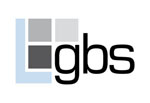smartWLI technology
The optical 3D sensors and profilometers of the smartWLI series are characterized by a very high measuring speed, resolution, acceptance angle - i.e. the ability to record highly inclined surface areas and, above all, the ability to carry out measure-ments with extremely little interference from outliers. In practical use, the sensors therefore offer decisive advantages over alternative solutions.
calculations on the graphic board
High-resolution, high-speed cameras are generally necessary to carry out high-resolution 3D measurements with optical 3D sensors in an acceptable measurement time. However, these also generate large amounts of image data that can only be saved with great effort. The Speedytec® technology offers the solution with data processing on current graphics cards with up to approx. 100 times the computing power of current CPUs. This enables the calculation of 3D data in real time without time-consuming storage of the image data.
outstanding height resolution
The height resolution is one of the most important parameters in surface measure-ment technology. Of all optical scanning measurement principles, coherence scan-ning (white-light) interferometry offers the highest height resolution which, in contrast to competing measurement methods, is independent of the objective magnification and measuring field size.
excellent lateral resolution
Coherence scanning (white-light) interferometry allows the calculation of height values without using information from neighboring points. By comparing interference contrast and focus, only image information with optimal sharpness is used. The lateral resolution is therefore not influenced by the focus position as in laser scan-ning and chromatic confocal sensors, not by the correlation matrix as in systems based on focus variation and not by the hole density of the Nipkow disk as used in confocal microscopes. This means that the lateral resolution is basically only limited by the optical resolution, although this can be exceeded in individual cases.
increased acceptance angle
The steeper a surface area is inclined, the more difficult it is to correctly measure this area because less and less light is reflected back to the sensor and the signal can be affected by multiple reflections. Thanks to the computing power used, the smartWLI series allows the correct detection of small signals and the measurement of surfaces that are much more inclined than is possible with comparable systems.
AQC – advanced quality control of the point cloud
Especially for roughness measurements, it is important to be able to trust each individual measuring point. Even a small number of outliers can have a negative impact on the measurement result. The smartWLI series uses the possibility of comparing the real interference signal (correlogram) with an ideal one and calculating a quality value from the degree of agreement. Points with insufficient data quality can be eliminated directly. Losses in resolution, such as those associated with the usual use of matrix filters, are thus avoided.








